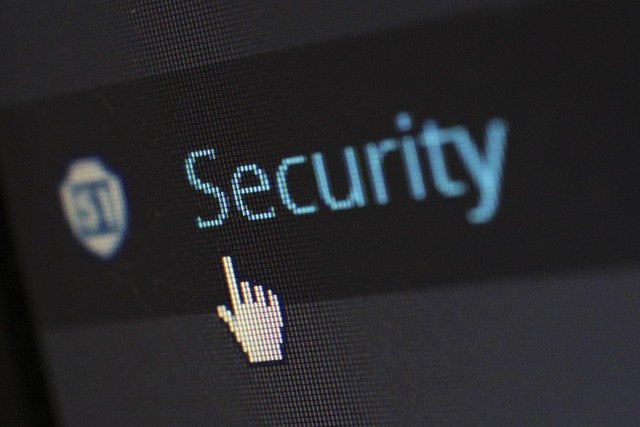Technology Is Everywhere — But Who’s Protecting You?
Every device you own connects to the internet, from your smartphone to your smart refrigerator. While this connectivity brings convenience, it also opens doors to cybercriminals who exploit vulnerabilities faster than most people can keep up. Understanding how digital threats have evolved and what protection measures exist is no longer optional—it's essential for anyone navigating today's hyper-connected landscape.

The digital world has transformed how we live, work, and communicate. We bank online, store personal photos in the cloud, shop with saved credit cards, and control home devices from our phones. Yet with every advancement comes a new wave of security challenges that most users don’t fully understand until something goes wrong.
Why online threats have evolved faster than most users realize
Cybercriminals have become increasingly sophisticated in their methods. What started as simple computer viruses in the 1980s has evolved into complex ransomware attacks, phishing schemes, identity theft operations, and data breaches affecting millions. The speed of this evolution outpaces the average user’s awareness because threats adapt to new technologies almost immediately.
Mobile devices, once considered relatively safe, now face the same risks as desktop computers. Smart home devices often ship with default passwords that hackers can easily exploit. Social engineering tactics have become so refined that even tech-savvy individuals fall victim to convincing fake emails and messages. The problem isn’t just that threats exist—it’s that they multiply and mutate faster than traditional security measures can address them.
Another factor is the sheer volume of connected devices. The average household now contains dozens of internet-connected gadgets, each representing a potential entry point for malicious actors. Many users don’t realize that an unsecured smart camera or thermostat can serve as a gateway to compromise their entire home network.
How simple antivirus tools now defend entire digital lives
Modern antivirus protection has evolved far beyond scanning for known viruses. Today’s security solutions offer comprehensive protection that includes real-time threat detection, firewall management, secure browsing features, password managers, and even VPN services. These tools work continuously in the background, analyzing behavior patterns to identify suspicious activity before damage occurs.
Artificial intelligence and machine learning have revolutionized how antivirus software operates. Instead of relying solely on virus definition databases, contemporary solutions can recognize malicious behavior patterns and stop zero-day threats—attacks that exploit previously unknown vulnerabilities. This proactive approach provides protection against threats that haven’t even been cataloged yet.
Many antivirus platforms now offer cross-device protection, allowing users to secure their computers, smartphones, and tablets under a single subscription. This unified approach ensures consistent security across all devices and simplifies management for users who might otherwise struggle to maintain separate security solutions for each gadget they own.
Cloud-based scanning has also improved performance. Rather than taxing your device’s resources with heavy local scanning, modern antivirus tools leverage cloud computing to analyze threats quickly without slowing down your system. This means you get robust protection without sacrificing device performance.
What you can do today to reduce personal risk in a hyper-connected world
Protecting yourself starts with awareness and extends to practical daily habits. First, ensure all your devices run current software versions. Updates often include critical security patches that address newly discovered vulnerabilities. Enabling automatic updates removes the burden of remembering to check manually.
Use strong, unique passwords for every account and service. Password managers can generate and store complex passwords securely, eliminating the temptation to reuse simple passwords across multiple sites. Enable two-factor authentication wherever possible, adding an extra layer of security that makes unauthorized access significantly more difficult.
Be skeptical of unsolicited communications. Phishing attempts have become remarkably convincing, often mimicking legitimate companies with professional-looking emails and websites. Before clicking links or providing information, verify the sender’s authenticity through official channels. When in doubt, navigate directly to a company’s website rather than using links in emails.
Regularly review your connected devices and disable or remove those you no longer use. Change default passwords on smart home devices immediately after setup. Segment your home network if possible, keeping IoT devices on a separate network from computers and phones that contain sensitive personal information.
Invest in reputable antivirus software and keep it active. While free options exist, paid solutions typically offer more comprehensive protection and better customer support. Consider your digital security as essential as locking your front door—it’s a basic precaution that prevents most opportunistic threats.
Back up important data regularly to external drives or secure cloud services. In the event of a ransomware attack or hardware failure, having recent backups means you won’t lose irreplaceable photos, documents, or other files. Automated backup solutions can handle this task without requiring constant attention.
Educate family members, especially children and elderly relatives who may be more vulnerable to scams. Creating a culture of security awareness within your household multiplies the effectiveness of technical protections. Everyone who uses connected devices should understand basic security principles and recognize common threat indicators.
Moving forward with confidence
The reality of our connected world means that perfect security doesn’t exist, but informed vigilance combined with quality protection tools dramatically reduces your risk. Cybersecurity isn’t about fear—it’s about taking reasonable precautions that allow you to enjoy technology’s benefits while minimizing exposure to its dangers.
By understanding how threats have evolved, leveraging modern protection tools, and adopting smart daily practices, you can navigate the digital landscape with greater confidence. The question isn’t whether you need protection, but rather how comprehensively you’re willing to defend the digital life you’ve built. Taking action today ensures that as technology continues to evolve, you remain protected rather than exposed.




